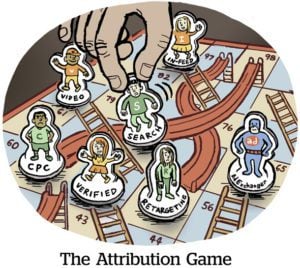Data clean rooms are to 2022 what customer data platforms were to 2019: Everyone’s talking about them, but people don’t necessarily know what they’re talking about.
One reason for the uncertainty is that there are no standards that define exactly what a clean room is or how it should operate.
“There are a lot of different solutions calling themselves clean rooms today … but, in many cases, they’re not fully secure [and] they’re not fully private at this point,” said former IAB Tech Lab CEO Dennis Buchheim, now VP of advertising ecosystem at Meta, speaking at an IAB Tech Lab event last week on the current state of privacy-enhancing technologies (PETs).
“That just begs for standards to be developed,” Buchheim said.
And that’s the plan. The IAB Tech Lab plans to release the first draft of a data clean room standards document by December. Those standards are being developed within the Tech Lab’s Rearc Addressability Working Group.
Clean room questions
With standards in place, it should be easier for advertisers and publishers to answer what should be a simple question: What is a data clean room?
Clients have been asking the same question of Keith Roberson, chief innovation officer at Omnicom-owned Annalect, for the past five years, and “it’s kind of a hard question to answer,” he said. “There’s not one answer.”
That’s because how you define a data clean room depends on the use case, Roberson said.
“Right now, we’re still trying to educate our clients,” he said. “It’s still super early for them.”
Make room
Not every company that has or calls itself a data clean room does the same thing or takes the same approach.
Google’s Ads Data Hub, for example, one of the earliest entrants, is a single-party centralized clean room that’s mainly used for measurement.
“Data goes into Google and doesn’t come out of Google, but you have the ability to essentially take first-party data – a lot of really great intelligence – and mix it with a bunch of other great intelligence from Google’s data set,” said Devon DeBlasio, VP of product marketing at InfoSum.
To confuse matters, one could also consider customer data platforms to be a “pseudo-single-party or centralized clean rooms,” DeBlasio said, because they allow advertisers and publishers to query multiple disparate first-party data sources in one place, albeit across one brand or a single organization.
Then you’ve got multi-party centralized clean rooms, like those powered by Snowflake, whereby data warehouses centralize data from multiple parties into a single location but without giving outsiders access, so that data scientists can do advanced analytics.
And on top of that, there are what DeBlasio called “decentralized or agnostic data clean rooms,” like InfoSum. The InfoSum approach is to place data from different companies into separate “bunkers” with all of the identifiable information removed so that brands can run queries across data sets without ever linking the data together.
InfoSum has a set of standardized protocols it uses to do its thing, but having an agreed-upon schema will give the industry a common language to talk about clean rooms (which is sorely lacking) and should also improve interoperability between clean rooms (which pretty much doesn’t exist today).
Clean room operators also need standards to get more sophisticated with what they can offer beyond basic measurement.
“Standards are an enabler,” said Edik Mitelman, GM of Privacy Cloud, the clean room product for app developers that AppsFlyer launched in June. “There will probably be no single company that does everything, and standards are another means to create a reality where we can access the utility we want in a privacy-preserving world.”

















